The days of guest blogging strictly for SEO purposes may be over — Google long ago called out the tactic — but it is still a great way to build rapport with your industry. Guest posting is also an ideal way to provide value to your audience without having a large platform yourself, which is often the case with new brands or websites.
One of the most challenging parts of this process is finding the right topic to pitch to your target sites. This can be particularly difficult when approaching large sites that have hundreds or thousands of published articles spanning many years. The chance that your topic has already been covered may be high.
Recently, I discovered an easy way to find potential topics for your guest posts that can nearly guarantee you will pitch something they haven’t covered before. It takes some research, but can dramatically improve your success rate when it comes to editors accepting your ideas.
Here is how it works:
1. Find a website you’d like to write for and identify their main organic competition.
2. Use the Semrush Keyword Gap Tool to find keywords that the competition ranks for, but your target site does not.
With this data, you will have plenty of topics that your target site hasn’t sufficiently covered, and with the right approach, you can craft a pitch that is tailored to that site’s focus and audience. This doesn’t mean you will automatically get your idea published, but it will help you avoid pitching topics they have already discussed.
In your pitch, you can also allude to the fact that their closest competitors have covered the topic, which may help your case as well as helping you steal some of your competitors traffic.
I recently used this strategy to write a contributor post for Foundr.com; a site focused on early-stage entrepreneurship. Here is a look at the process I used, and how you can apply this to your guest blogging campaigns.
Find Your Target Website
Many websites still accept guest posts or editorial submissions, so building your potential prospect list should be straightforward. I began by looking for entrepreneurship, business, and marketing sites that seemed accessible, and made a list of 5–10 websites I wanted to pitch.
From there, I started with Foundr.com because the site met my criteria and includes a contributor page with information on how to submit content ideas. When a site offers this info, it is much easier to adapt your pitch to exactly what they are looking for.
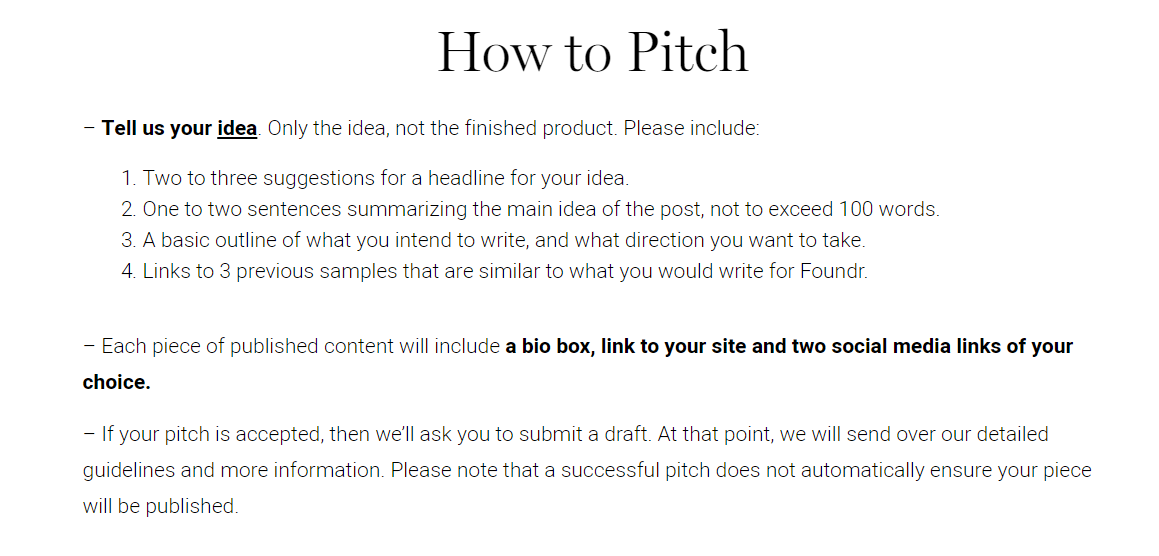
Aside from being a fan of Foundr’s podcast, I also spent some time browsing their recent and most popular blog articles to get an idea of the site’s tone, voice, and style. Once I was comfortable knowing I could pitch a topic that would be valuable to their audience, I began researching the site’s organic competition.
Identify the Organic Competition
The Semrush Organic Competitors report identified more than 7,500 domains that had keywords in common with Foundr.com, including large sites like Forbes.com, Entrepreneur.com, and Medium.com.
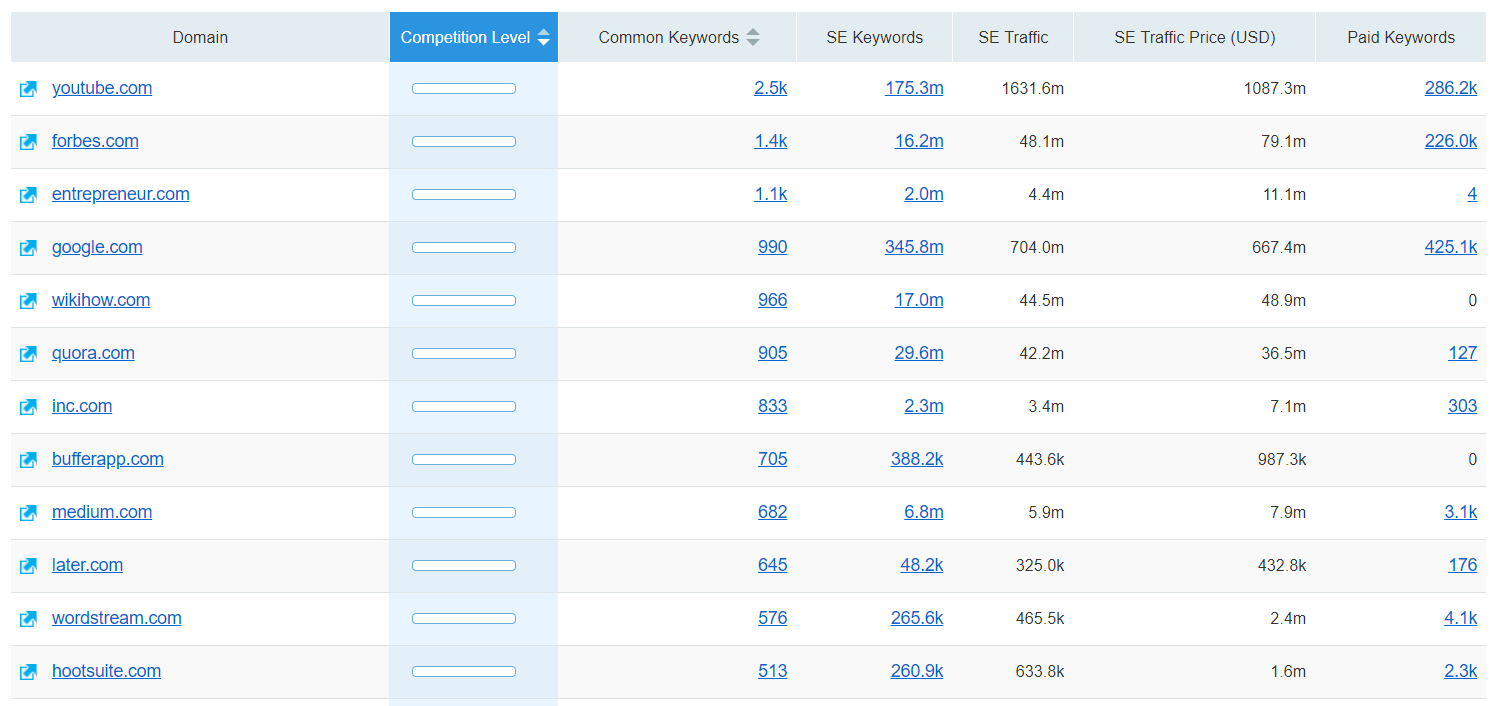
When choosing domains to run through the Keyword Gap Analysis, however, I like to use sites that aren’t too large — otherwise, you will get a lot of keywords and topics that aren’t necessarily related to your target site.
If I were to run YouTube and Foundr through the analysis, for example, I would get thousands of keywords YouTube ranks for that are unrelated to Foundr.
It helps to identify sites of the same relative size and scope of your target site, and this will make the next step easier when choosing keywords and potential content topics. In my research, I found one site that seemed to have a large amount of data to work with, but was focused enough to provide targeted results, and that was Harvard Business Review.
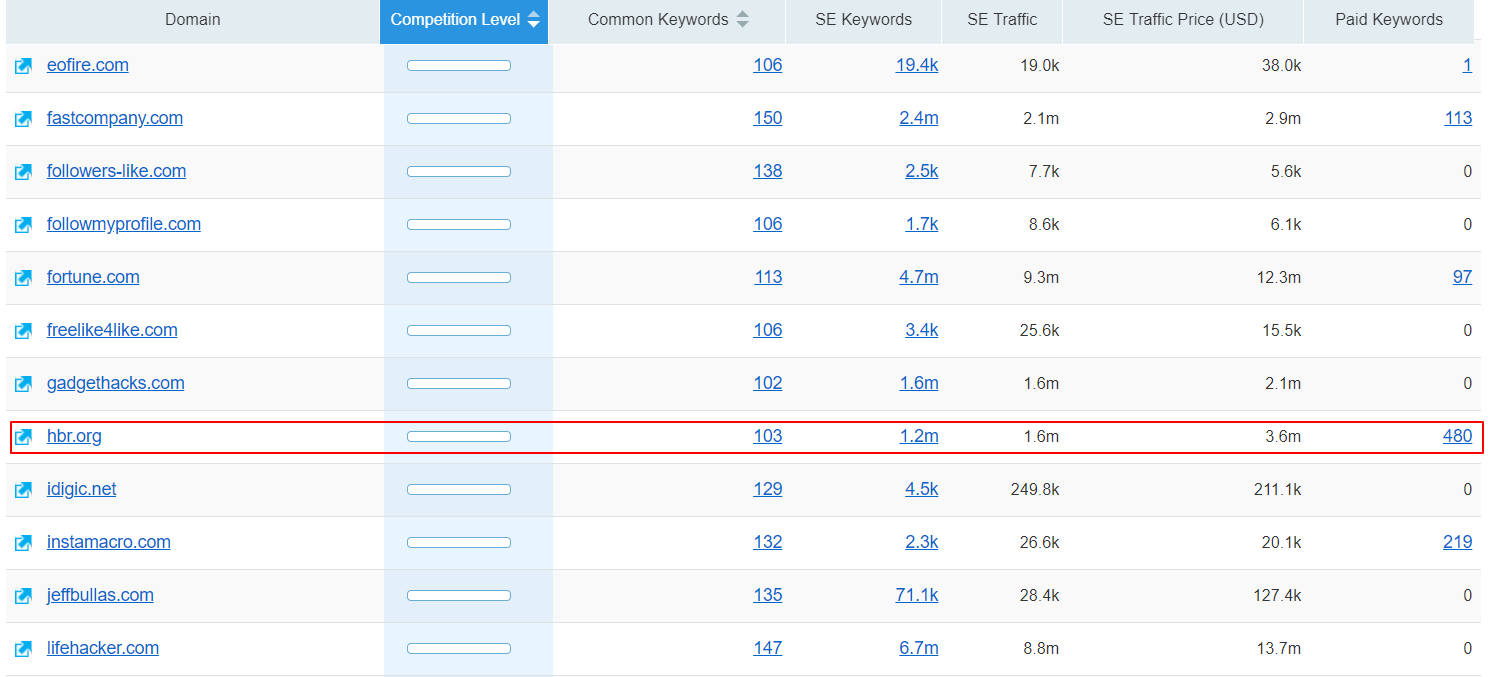
Harvard Business Review covers everything from entrepreneurship to leadership, management, and marketing. The site seemed a good fit because Foundr takes a decidedly young approach to entrepreneurship, where HBR is a decades-old non-profit whose goal is “to improve the practice of management in a changing world.” They may cover similar topics, but their philosophies are different, and I believed I could use this to my advantage when crafting article ideas.
The next step was to find keywords and topics that HBR ranked for that Foundr did not.
Use Keyword Gap Analysis to Find Relevant Keywords
Using the Keyword Gap tool, I entered HBR.org as the first domain and Foundr.com as the second. In between, I chose the “Unique to the first domain’s keywords” option. This gave me more than one million keywords.
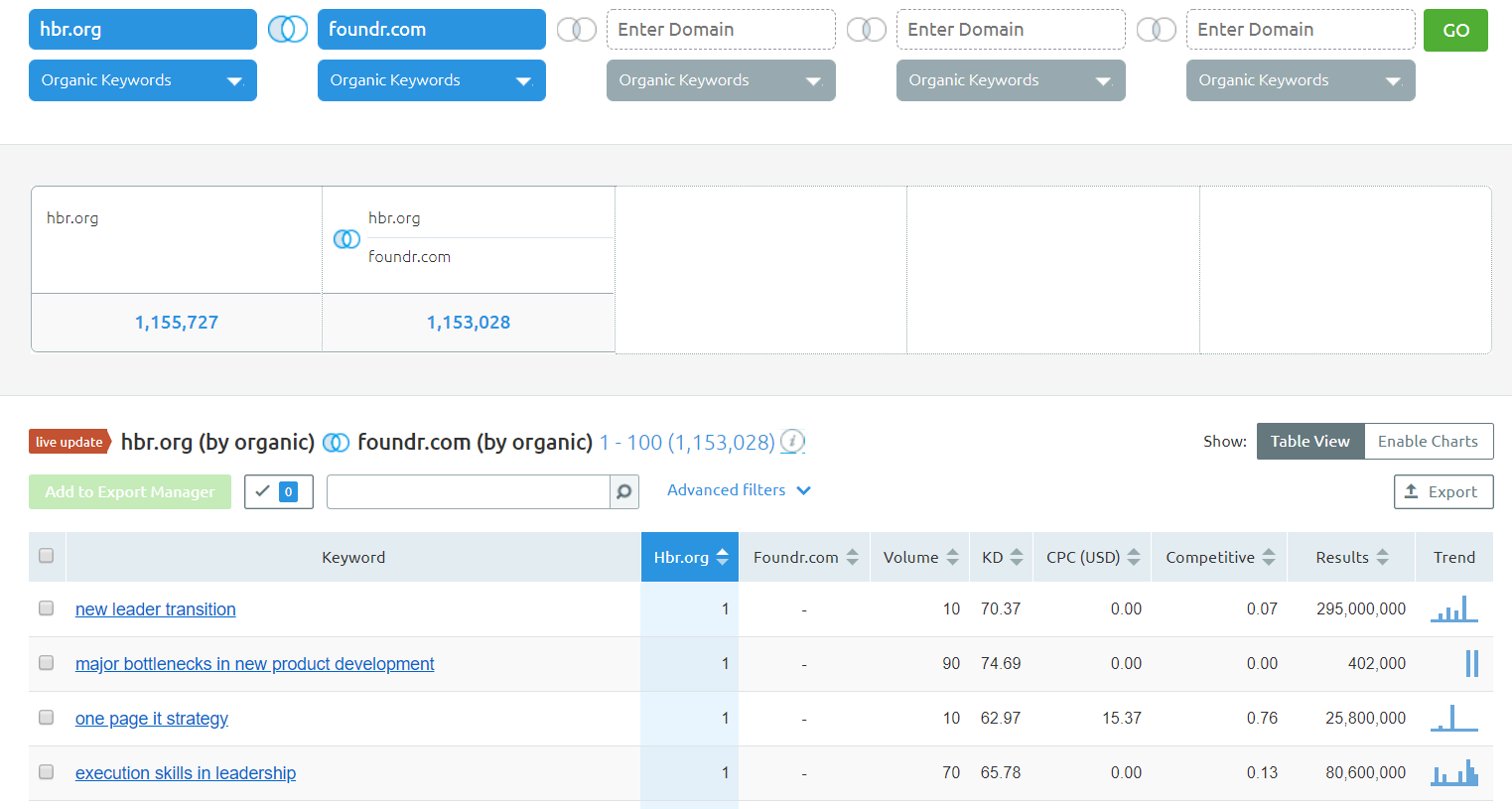
To clean things up, I narrowed down the results by volume (keywords between 80 and 500 searches) and keyword difficulty (less than 85). This gave me a more manageable starting point of about 150,000 keywords.
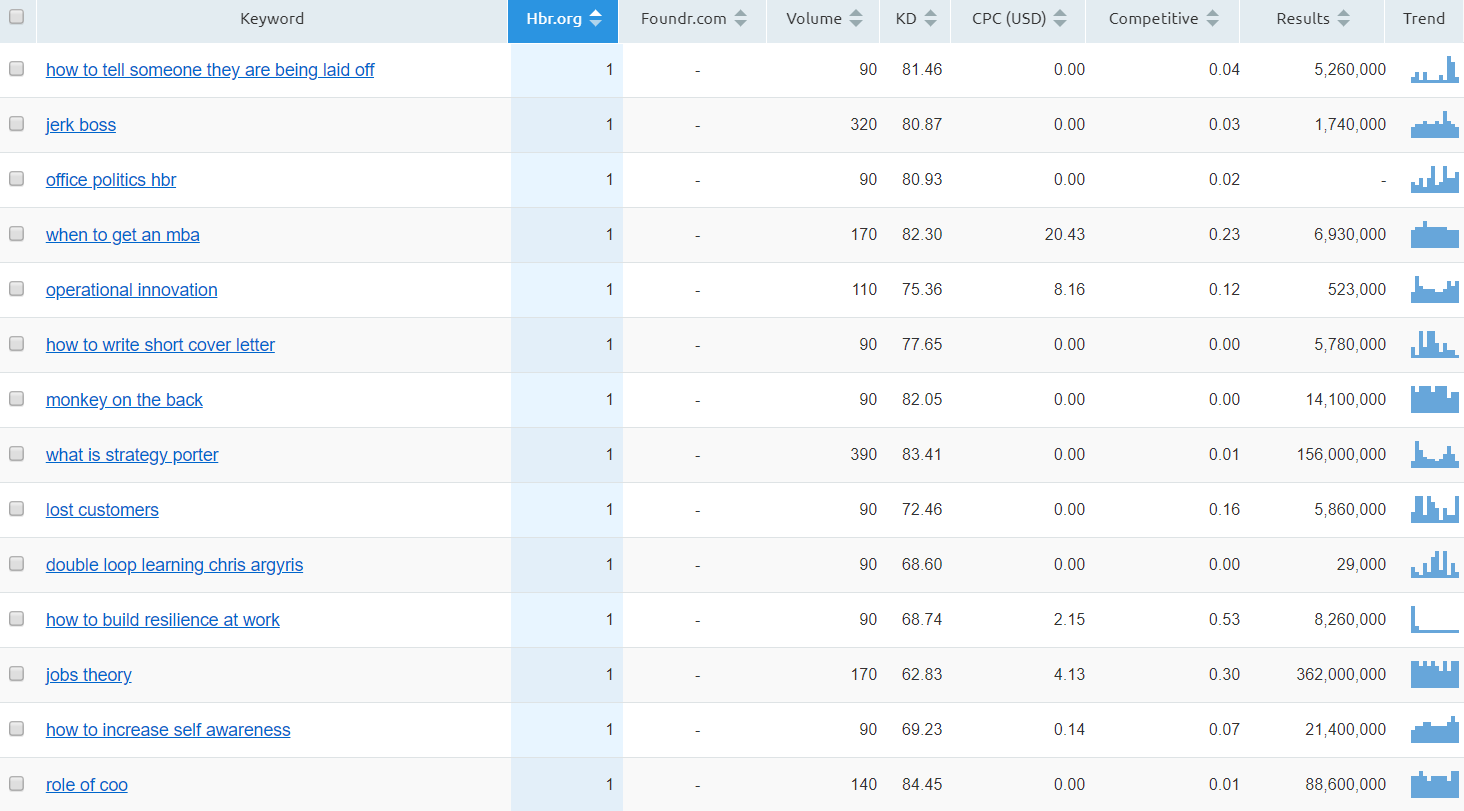
Next, I began going through the keywords to see if there was anything I could use as the seed of an article for Foundr. Here is where critical thinking comes into play, and although it is not always fun to work through hundreds of keywords, the time you put into this stage can make or break your pitches down the road.
Many keywords were related to careers and management, including:
How to tell someone they are being laid off Office politics hbr How to write short cover letterSome of these may be good long-tail topics, but Foundr is about early-career entrepreneurs and founders — not traditional career advice. After some research, one of the top keywords stood out:
how to build resilience at workThat was something that applied to entrepreneurship because of the immense obstacles and challenges facing those looking to build businesses. Resilience isn’t just helpful for founders — it is practically a requirement.
After doing further research on Foundr’s content, including a Google “site:” search, I found no other article that seemed to hit on the same topic. I had a winner.
Tailor Your Keyword with an Appealing Angle
Once you have your keywords in mind, it is not enough to simply pitch that search query as your topic. You will want to craft an angle that is specific to your target site’s audience and goals. For Foundr, it was not a stretch to relate resilience and entrepreneurship, but I needed to refocus the keyword to be more focused on their brand and business goals.
In my submission, I described “how entrepreneurs can build world-class resiliency by rethinking the way they approach their struggles and challenges.” I explained that for entrepreneurs, resilience is often more important than more concrete skills that are easier to quantify.
The search “how to build resilience at work” then became the topic of how to build resilience while building a business.
I sent the pitch and the next day received an email from the editor saying they were interested in the article. Several drafts, revisions, and months later, the article was published and shared more than 70 times.
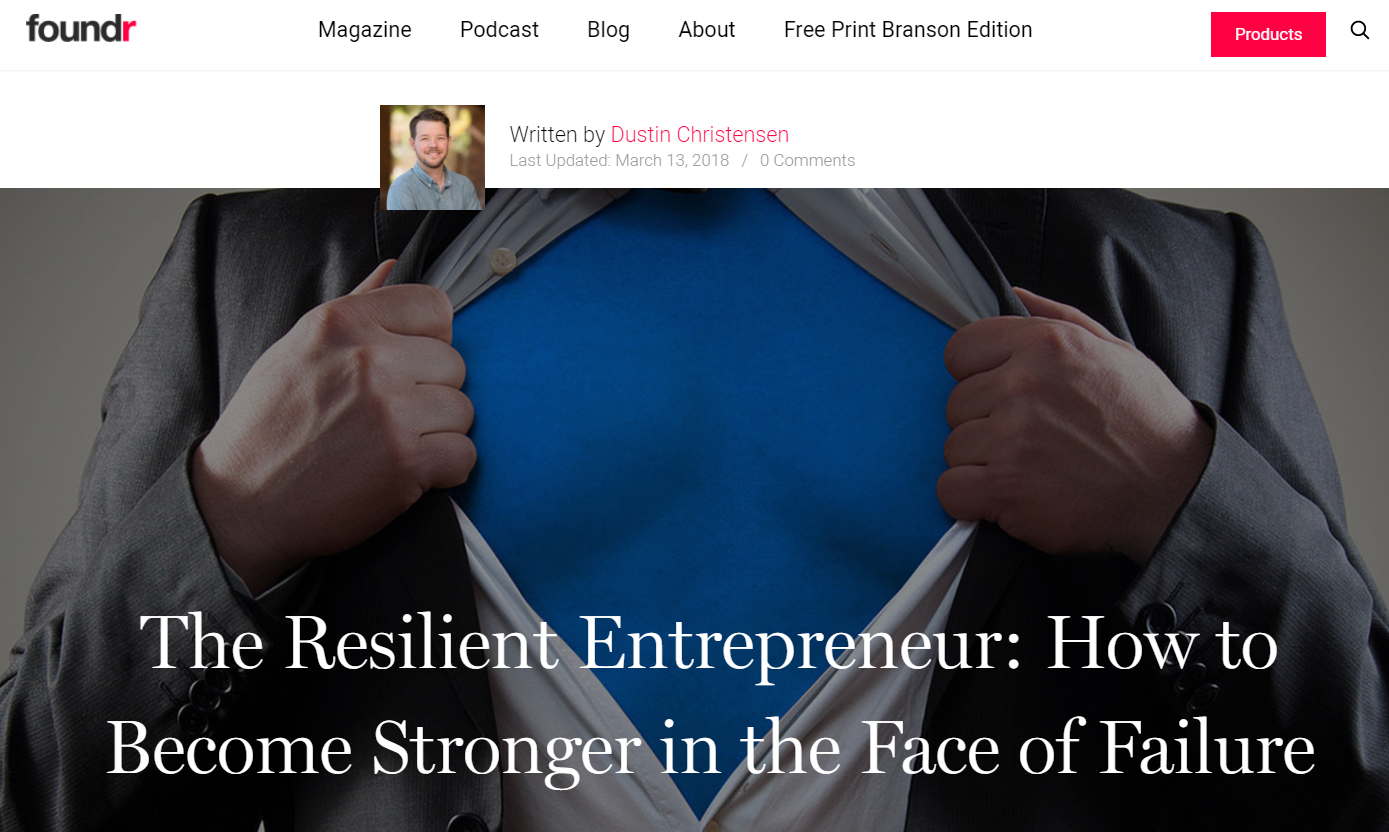
Conclusion
For many writers and marketers, finding a good angle for content is often harder than the writing itself. Using the Semrush Gap Analysis tool, I was able to cut hours of time from my prep work by focusing on topics I knew websites would be more likely to publish. It is not a fool-proof method to landing guest posts, but it can make the outreach process much more efficient.
In the end, the success of your guest post campaigns comes down to your ability to provide real, practical value to your audience, and the right keyword research can help you demonstrate that value front and center starting with your guest blog pitch.
Innovative SEO services
SEO is a patience game; no secret there. We`ll work with you to develop a Search strategy focused on producing increased traffic rankings in as early as 3-months.
A proven Allinclusive. SEO services for measuring, executing, and optimizing for Search Engine success. We say what we do and do what we say.
Our company as Semrush Agency Partner has designed a search engine optimization service that is both ethical and result-driven. We use the latest tools, strategies, and trends to help you move up in the search engines for the right keywords to get noticed by the right audience.
Today, you can schedule a Discovery call with us about your company needs.
Source:





